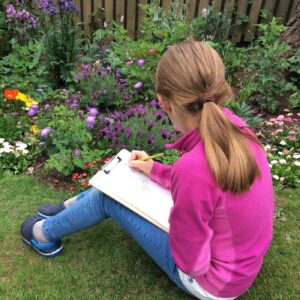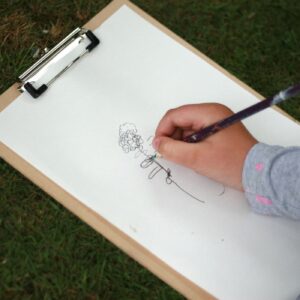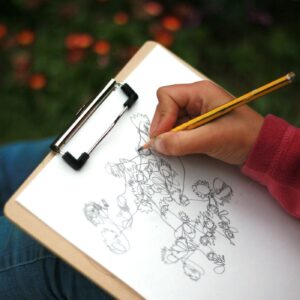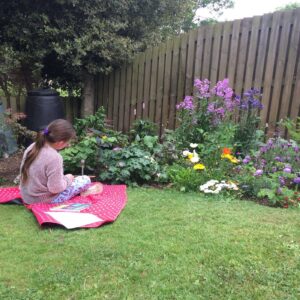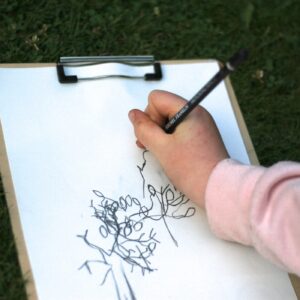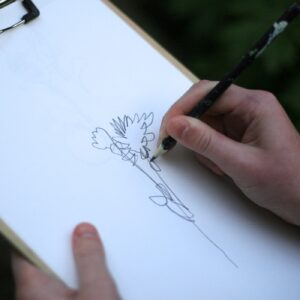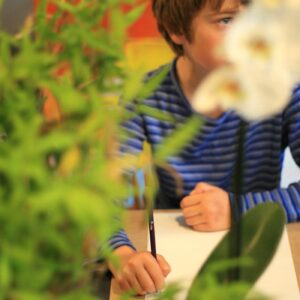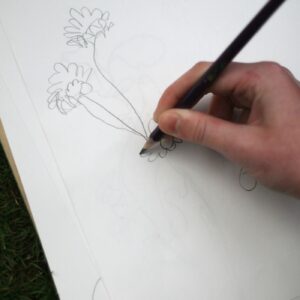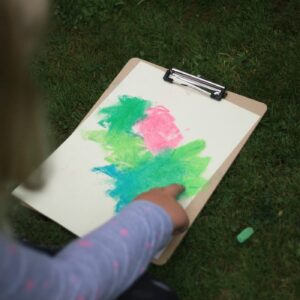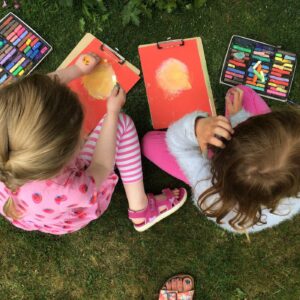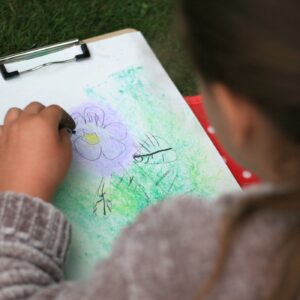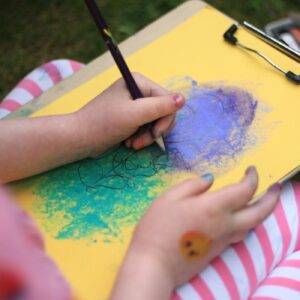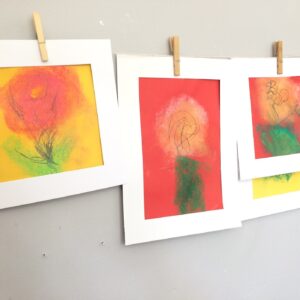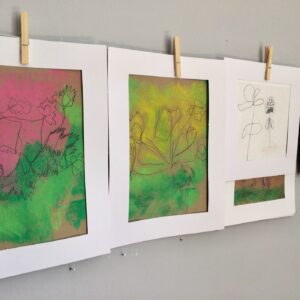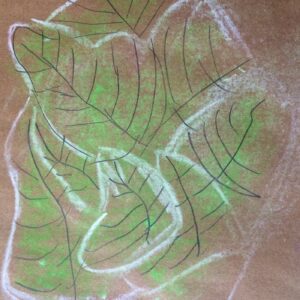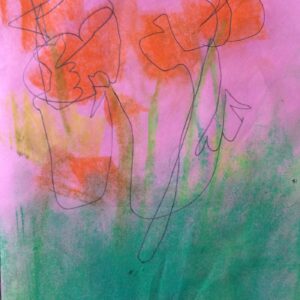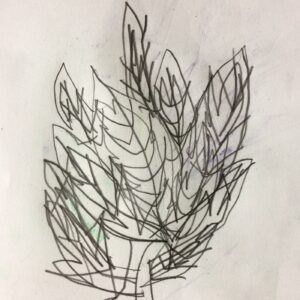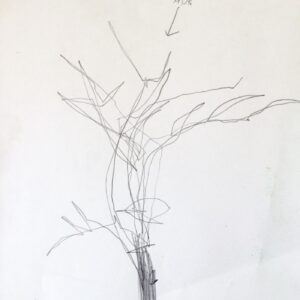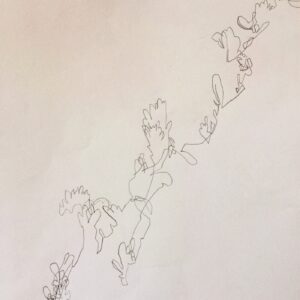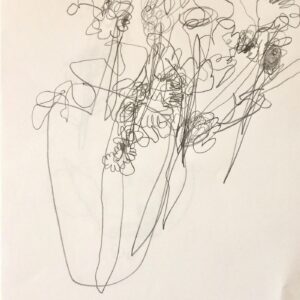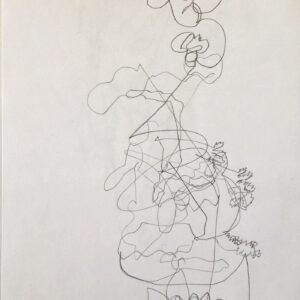‘en plein air’
With summer finally upon us, it seemed appropriate to plan for this workshop block to take place outside – but being the Scottish summer, such ideas don’t always go to plan! After weeks of proper hot weather, the clouds and rain decided to head our way just in time for this workshop!! However, we did manage most sessions outside which was fantastic! The garden at EXPLORE PLAY CREATE is at its best in the early summer and there is an abundance of inspiration – the colours, textures, shapes, forms, layers and smells all offer a budding artist so much source material. For the first week of this short summer block, I decided to plan some drawing activities to try and get the young creatives to really focus in on their subject and ‘look’ properly at something by taking their time to study the plants and flowers and slowly draw their observations. And drawing outside, in a garden is such a relaxing and beautiful activity.
First off we did a drawing exercise which is fantastic to do whether you are 4 or 94 and it’s a useful way to get back to basics if you’re having a struggle with any creative endeavour. Continuous line drawing is a great way to create interesting marks on the paper and by doing this ‘blind‘ it really focuses the artist to properly observe their subject – rather than drawing how you think something should look, you draw what your eye is actually seeing. The young creatives were asked to choose a plant they particularly liked, paying attention to things like rough or smooth edges and texture. They were encouraged to trace the object with their eyes, while at the same time using the pencil to echo the movement of their eyes, without taking the pencil off the surface of the paper. And this is the very tricky bit and it took quite a few attempts to master that skill!! The first few exercises were done ‘blind’ – the children were not allowed to look at their drawing – this is such a liberating process as it takes away the scary notion of making a ‘perfect’ drawing or the fear of ‘not being good enough’. Subsequent drawings were done by combining this method as well as allowing the children to draw in a way they are used to – by looking to and from their drawing to the subject. This exercise was repeated over and over – encouraging the children to change their view every 10 mins or so. I then started to introduce other drawing materials, such as soft pastels, charcoal and rubbers. The results were very impressive – I absolutely love how you get a real feel for the quality of the plants, and the shapes and patterns created are wonderful!
